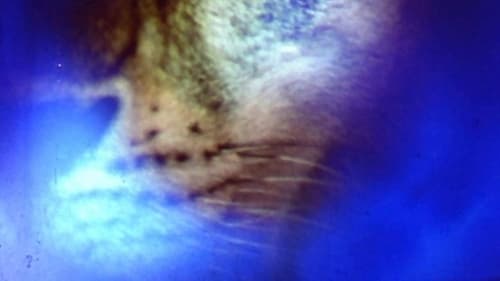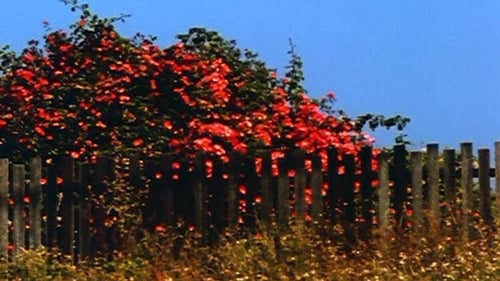Bruce Baillie
출생 : 1931-09-24, Aberdeen, South Dakota, USA
사망 : 2020-04-10
약력
Bruce Baillie (September 24, 1931 - April 10, 2020) was an American cinematic artist and founding member of Canyon Cinema in San Francisco. In 1961, Baillie, along with friend and fellow cinematic artist Chick Strand, among others, founded San Francisco Cinematheque.

This very special film features a carefully curated selection of some of the priceless messages that have graced Anthology’s voicemail system over the years. From the historically important to the utterly (and sublimely) absurd, they feature a cast of characters ranging from legendary avant-garde filmmakers, scholars, and other cultural figures to civilians whose legend has (until now) been confined to the offices of Anthology, thanks precisely to their witty, eloquent, eccentric – or in some cases unforgettably psychotic – voicemails. We’ve toyed with the idea of sharing these messages in some form for years, and the “Imageless Films” series provides a perfect pretext.

Himself
(The Laundry Lesson) For Jefferson Sunflower

Director
(The Laundry Lesson) For Jefferson Sunflower

Director
A short film by Bruce Baillie, made in 1966, but never released. It was restored by Academy Film Archives, Los Angeles.

From Ross Lipman's "personal ethnographies" series, an informal visit with legendary filmmaker Bruce Baillie at his home on Camano Island in Washington State.

Director
An ardent tribute to filmmaker Robert Fulton (who died in a plane crash in 2002) by Canyon Cinema co-founder Bruce Baillie, made for the occasion of a screening of Fulton's work arranged by Dominic Angerame not quite a decade after his passing.

Director
Filmmaker Bruce Baillie curated a Canyon Cinema program in 2005 dedicated to the work of Will Hindle (with whom he collaborated from time to time during the 1960s and early-1970s). For the occasion, Baillie (along with his daughter, Wind) made this short introductory film.

Director
SALUTE, the first installment of Bruce Baillie's proposed three-part final film, MEMOIRS OF AN ANGEL, chronicles (in collage form) the legendary filmmaker's time in the Navy and beyond. The subsequent installments, NIGHT and LIGHT, are still works-in-progress. "A few of the thematic elements... Introduction of the element of illusion (MY LAST MASQUERADE). Imagery of war [in the form of] documentary footage, film and the author recording himself, self-consciously, in uniform! One cannot here avoid an implicit reference to the Bhagavad Gita; the warrior Arjuna and Lord Krishna in Dharma combat on the battlefield as metaphor for the human dilemma in confrontation with the world of time/space, illusion of opposites [and the] attachment to the merely transient." - Marcel Joyeux, L'illumination

Director
These scenes are a one-minute, condensed version of the conclusion to my last work, Memories of an Angel. The scene of children was shot in the Phillipines recentely, including my daughter, Wind Baillie. The birds, near our home in Washington State. The concluding Pietà, with my wife Lorie and son, Keith-Kenneth, was recorded at the beach here. All the last light of day: "Te lucis ante terminum." (Bruce Baillie)

Director
Magic hour in Chapala, Jalisco. A previously unseen, edited section of film gleaned from Baillie's sprawling scrolls spanning several decades that now comprise his 12-hour unreleased "Magic Box" series. Julio en Chapala was shot during the period when Baillie lived in Mexico and was filming Valentin de la Sierras.

Director
This video work often used by the filmmaker to introduce, in his absence, film programs scheduled in distant venues. Created also as formal Introduction to an eleven-hour archival collection of unfinished films.

Self
Filmmaker Jonas Mekas films 160 underground film people over four decades.

Director
The film proper begins as Baillie takes the passenger seat of an older Honda and films an hour-long drive in the rain. Baillie's attention moves from passing images on the roadside to other vehicles to the raindrops that squirm across the windshield. Underneath the real-time gambol, Baillie supplies a soundtrack, ostensibly on a tape thrust into the car's cassette-radio player at journey's start, that lampoons local, folksy radio shows with snippets from movies, Golden Age radio, public service announcements and authoritative commentary by an incomprehensible child. The track lends a nostalgic air to a film devoid of humans as objects but filled with meditative rumination and startlingly poetic imagery, such as a large truck enveloped in the water spray kicked up by its own wheels.

Director
“For the dispossessed, the excluded, the condemned, fallen from life and loving.” These words are typed across the screen at the outset of THE P-38 PILOT, Bruce Baillie’s experimental video portrait of a former pilot outraged by old age and bitter with regrets. We hear the man's disputatious monologue on the soundtrack: “I’m not the kind of guy to end up in a slime pit… I can’t understand it, see?” Baillie, an established master of 16mm cinematography, uses the video medium to search the man's confined space for rustling movements and leaking colors. Chet Baker sings “There Will Never Be Another You” as the filmmaker bids the pilot a peaceful adieu.

With Lorie, Wind and BB.

Director
With Lorie, Wind and BB.

Director
Not long after settling on Camano Island, Bruce Baillie began creating works on video. Many of these shorts and fragments were little-seen since Canyon Cinema, the distribution organization he co-founded in 1961, limited its efforts to film and declined to distribute Baillie's video pieces. Undeterred, this brevity of video feedback and suggestive text was distributed by the French film co-op Cinédoc and now appears here. Unlike a number of Baillie's later biographical video works which are titled after the individuals they profile, ROY ELDRIDGE takes its name from one of the jazz performers on the soundtrack.

Director
Kodachrome film diary.

Director
A personal and experimental film by San Francisco Bay area avant-garde filmmaker, Bruce Baillie.

Director
A psychedelic montage of home movie footage gives way to a silent western story.

Director
Skin, eyes, knees, horses, hair, sun, earth. Old song of Mexican hero, Valentin, sung by blind Jose Santollo Nadiso en Santa Cruz de la Soledad.

Director
[See Note With QUICK BILLY: *Included at no additional rental charge, IF REQUESTED, 6 uncut camera rolls to be shown before or following QUICK BILLY. Numbered 14, 41, 43, 46, 47, and 52 totaling 16 min., col., silent [24 fps], these are uncut archival materials.]

Director
Inspired by a lesson from Erik Satie, a film in the form of a street: Castro Street, running by the Standard Oil Refinery in Richmond, California.

Director
One of San Francisco Cinematheque co-founder Bruce Baillie's sensuous tone poems, TUNG is a portrait of a friend; sandy skin and flaxen hair in the early-morning light.

Director
"One continuous, intimate shot from within the commune…Being is seen as transitory; everything is in the infinite process of becoming."

Director
By the "Canyon Cinema Documentary Film Unit" - (Paul Tulley, Bruce Baillie, etc). Made in Spring, '66 for a small community of Indian people near Laytonville, California.

Director
It is a picture of me in a stream saluting the audience on the soundtrack.

Director
The film is made up of one single take. The camera pans to the left, focusing on a dilapidated fence in a rural field, as Ella Fitzgerald's "All My Life" plays on the soundtrack. At the end of the 3 minute film, the camera tilts up to the blue sky just as the song ends.

Director
Co-founder of Canyon Cinema and the San Francisco Cinematheque and one of the godparents of experimental film, Bruce Baillie (1931-2020) has forged a singular path in his visionary explorations of the world, his exquisite treatment of light and fragmented storytelling influencing successive generations of like-minded filmmakers. Shot on a cross-country journey during 1964 and 1965, is the Baillie film most in need of rediscovery. Joining the ranks of Bob Dylan, Robert Frank and Jack Kerouac in chronicling a tumultuous period in American history from the road, Baillie sets out "to show how in the conquest of our environment in the New World, Americans have isolated themselves from nature and from one another."

Director
"Cycle scrambles poem. Bass solo by Pat Smith, LA". - BB...

Director
An experimental film dedicated to the Dakota Sioux, which follows the form of the Christian Mass. A series of images of contemporary America interwoven with the ritual spiriting away of a dead Indian.

Director
The 16-minute film falls neatly into two nearly equal parts, separated by fades to and from black. Part one depicts a sunrise, a journey out to sea in a boat, then gulls flying around the boat while fish are cleaned, and finally the journey back and the reappearance of land.

Director
Dedicated to Albert Verbrugghe, whose wife was killed in Katange by UN soldiers.

Director
A sensitive, low-key portrait of the East Bay Activity Center, a school in Oakland, California, started in the 1950s to help emotionally disturbed children. The atmospheric documentary opens with hilly East Bay streets shrouded in fog. The mist lifts as the film moves to children at play. Often shown in unobtrusive close-up, the youngsters appear as thinking individuals, enjoying the swings, puzzling out problems, or interacting with their teacher in the classroom.

Director
One of the artist's “newsreels” from the early 1960s, The Peace Rally intercuts footage from an anti-nuclear rally with California rock formations.

Director
Made on the north coast of California, in Mendocino, combining spontaneity and preconception in a film that is essentially a short lesson in feature form.

Director
"First film, 1961, dedicated to Jean Wong. Featuring Ms Wong, Mamma Dog, Petey, (son of Mamma Dog), and San Francisco." -BB

Director
An early work by Bruce Baillie, originally a Canyon Cinemanews.

Director
Bruce Baillie's Mr. Hayashi might be thought of as a putative East Coast story transformed by a West Coast sensibility. The narrative, slight as it is, mounts a social critique of sorts, involving the difficulty the title character, a Japanese gardener, has finding work that pays adequately. But the beauty of Baillie's black-and-white photography, the misty lusciousness of the landscapes he chooses to photograph, and the powerful silence of Mr. Hayashi's figure within them make the viewer forget all about economics and ethnicity. The shots remind us of Sung scrolls of fields and mountain peaks, where the human figure is dwarfed in the middle distance. Rather than a study of unemployment, the film becomes a study of nested layers of stillness and serenity.

Director
A film by Bruce Baillie

Director
A video by Bruce Baillie

Director
A film by Bruce Baillie

Director
Kind of a "News," for the people of the 24-hour a day vigil around the US Marine Ammunition Depot at Port Chicago, California.

Director
Made for the Oakland Public Schools on an experimental series of classes in the arts.

Director
The sailing of the boat Everyman into the Pacific nuclear testing area as protest. John Adams and guitar.

Director
Shown in our early Canyon Cinema showings, never printed. Example of "The News," an inexpensive local means of combining film seeing and filmmaking.






